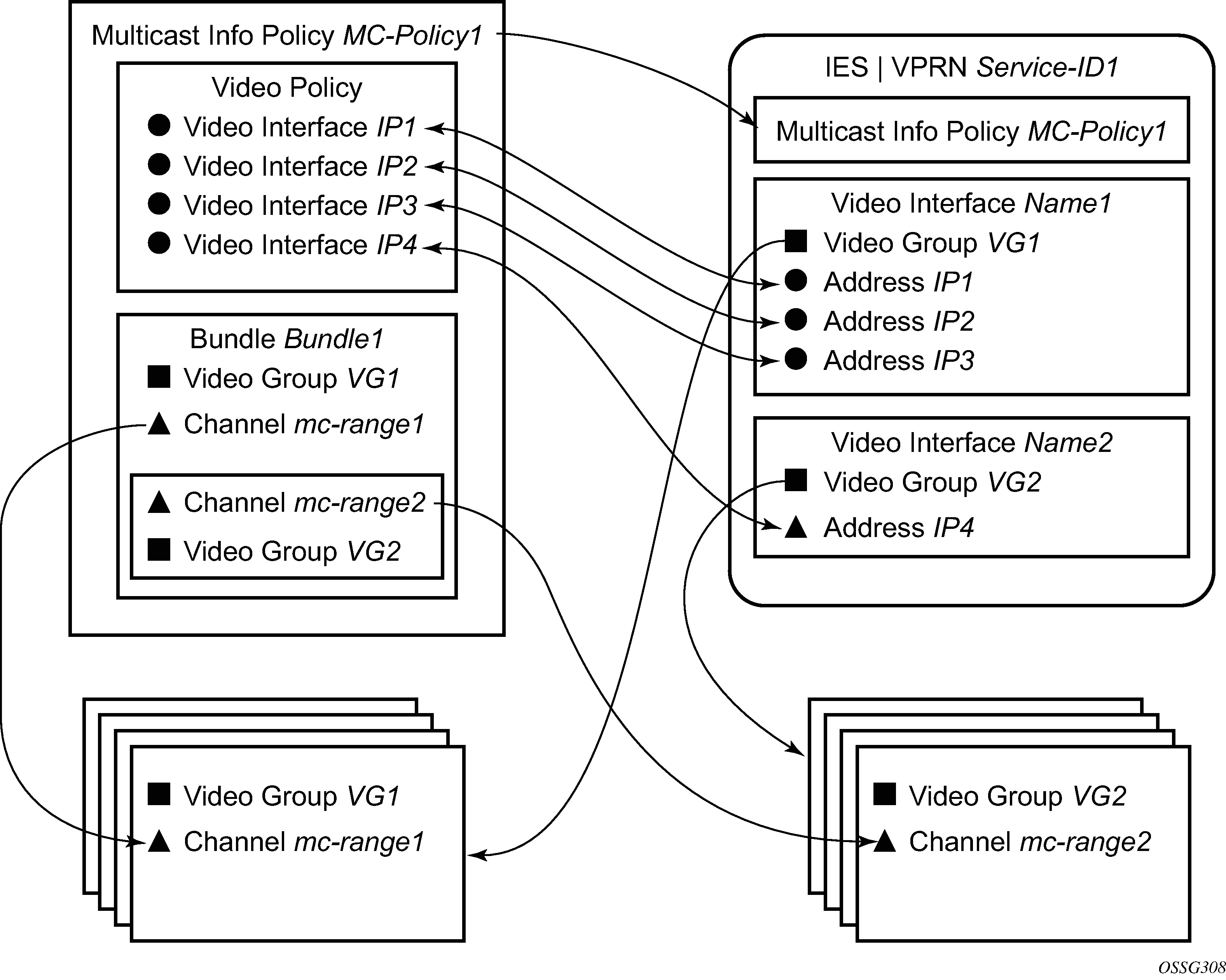The main entities of video configurations are:
video group
multicast information policy
a video policy to configure video interface properties
multicast bundles and channels to associate bundles/channels with video groups
within a service, configuring video interfaces and their associations with video groups
Figure: Video services configuration elements shows various configuration elements and how they are associated by configuration.

A video interface within a service can have multiple IP address, and their association with the video interfaces within the video policy are based on IP addresses. Support for multiple video interface IP addresses for a specific video interface allows video characteristics (burst rate, retransmission format, and so on) for the channels associated with the video interface to be based on the IP address on which the request is received.
Both the bundle/channel configuration and the video interface configuration within the service are associated with a specific video group. If the request is received on a video interface for a channel not serviced by the video group associated with the video interface, the request is invalid and is dropped. Figure: Video services configuration elements displays an example of this is a request for mc-range2 received on IP1, IP2 or IP3. A request for mc-range2 would only be valid on IP4.
As with other multicast information policies, the bundle name default is a special bundle and is reserved for setting of default values. If a video parameter is not explicitly set in a bundle/channel, the value set in the default bundle is used.